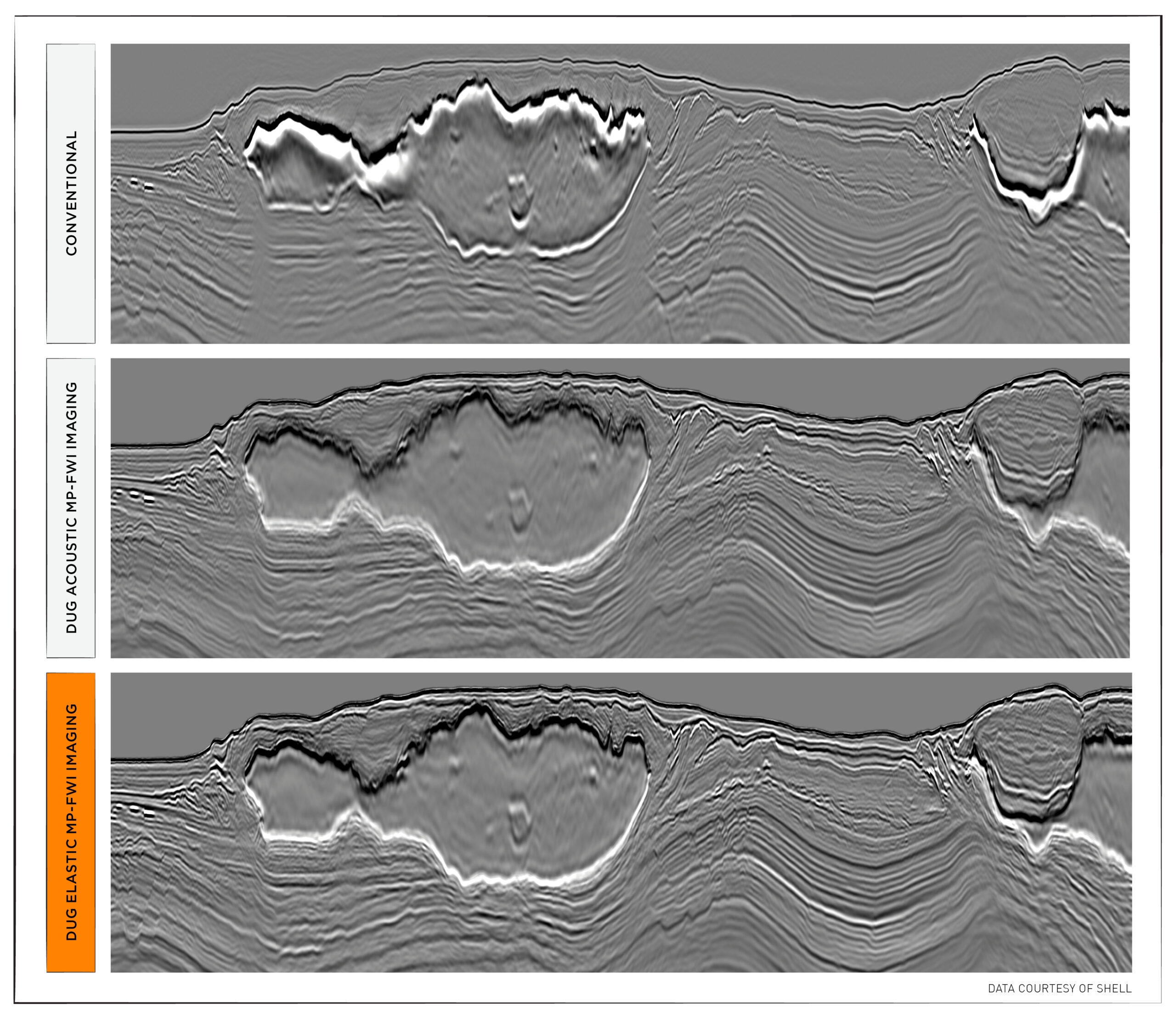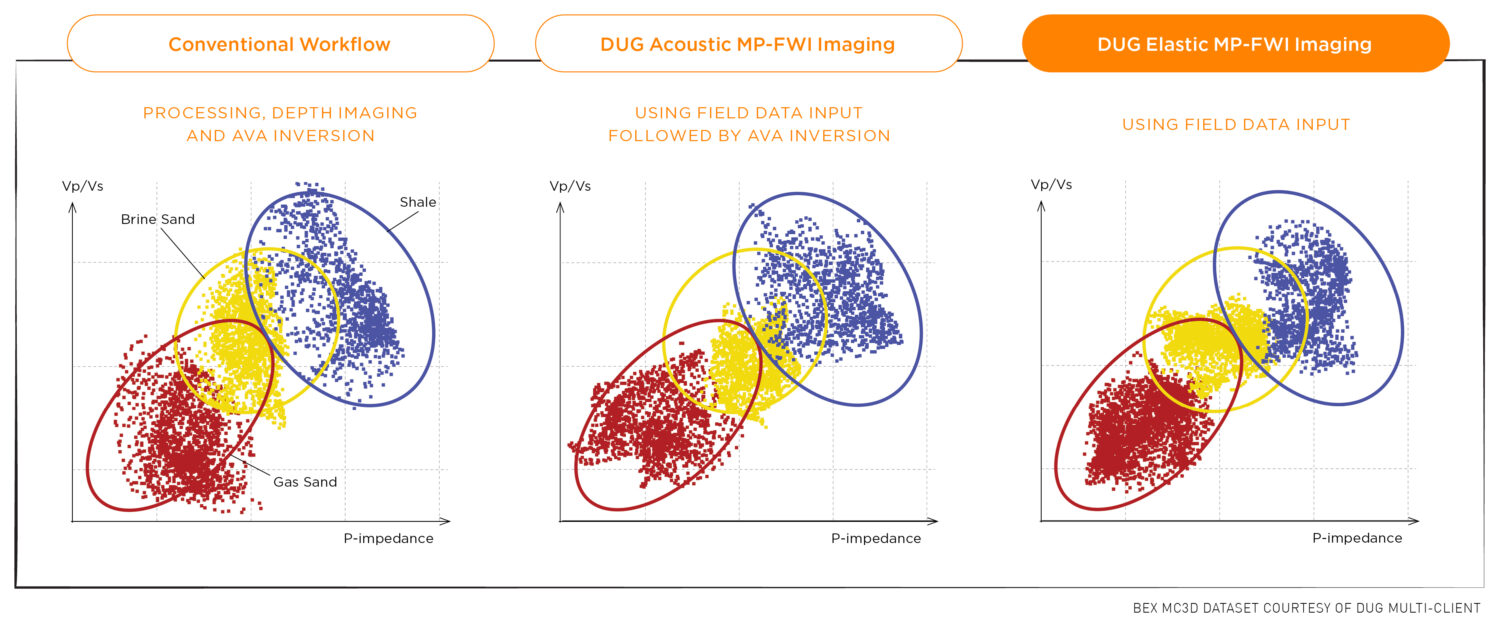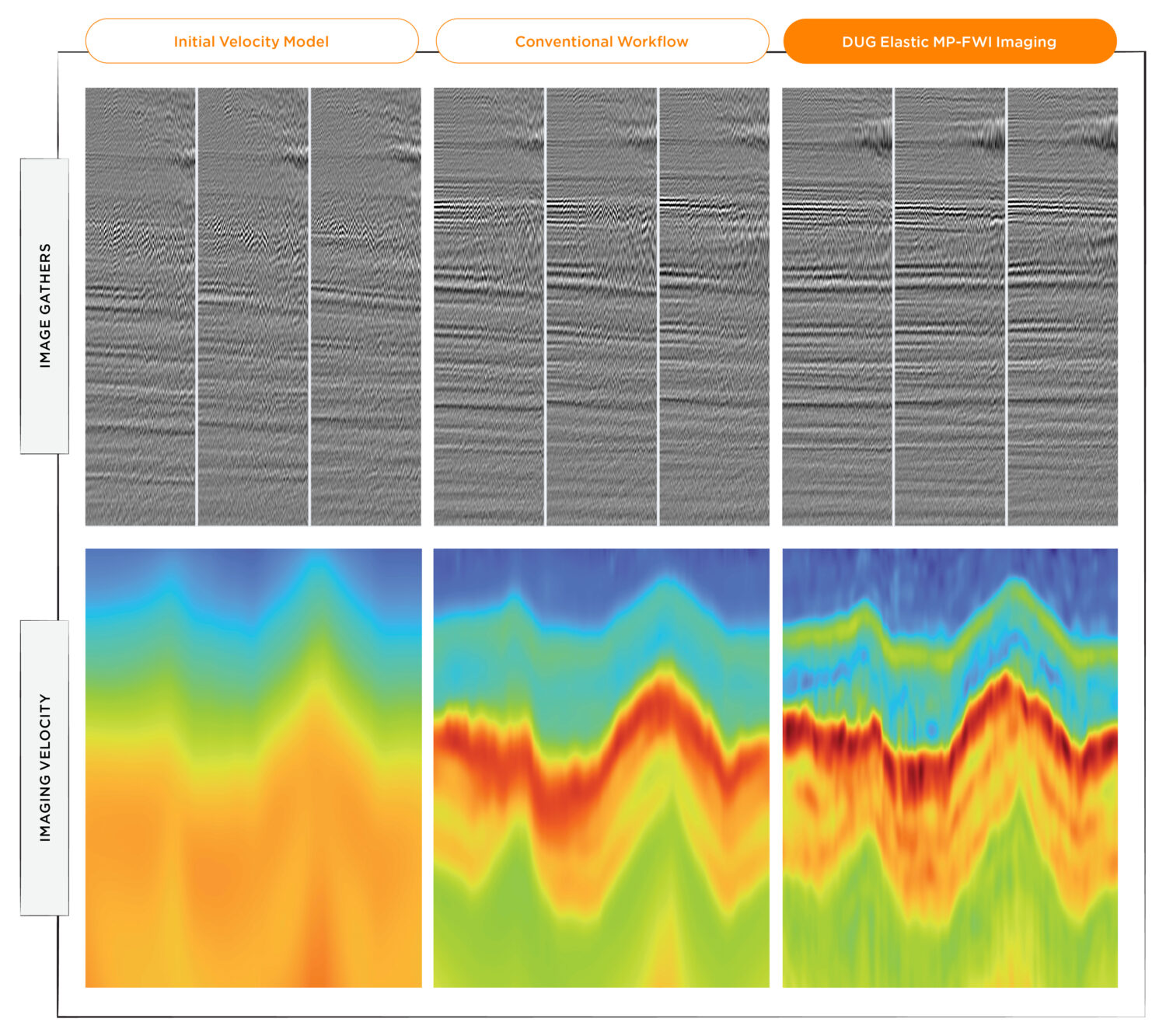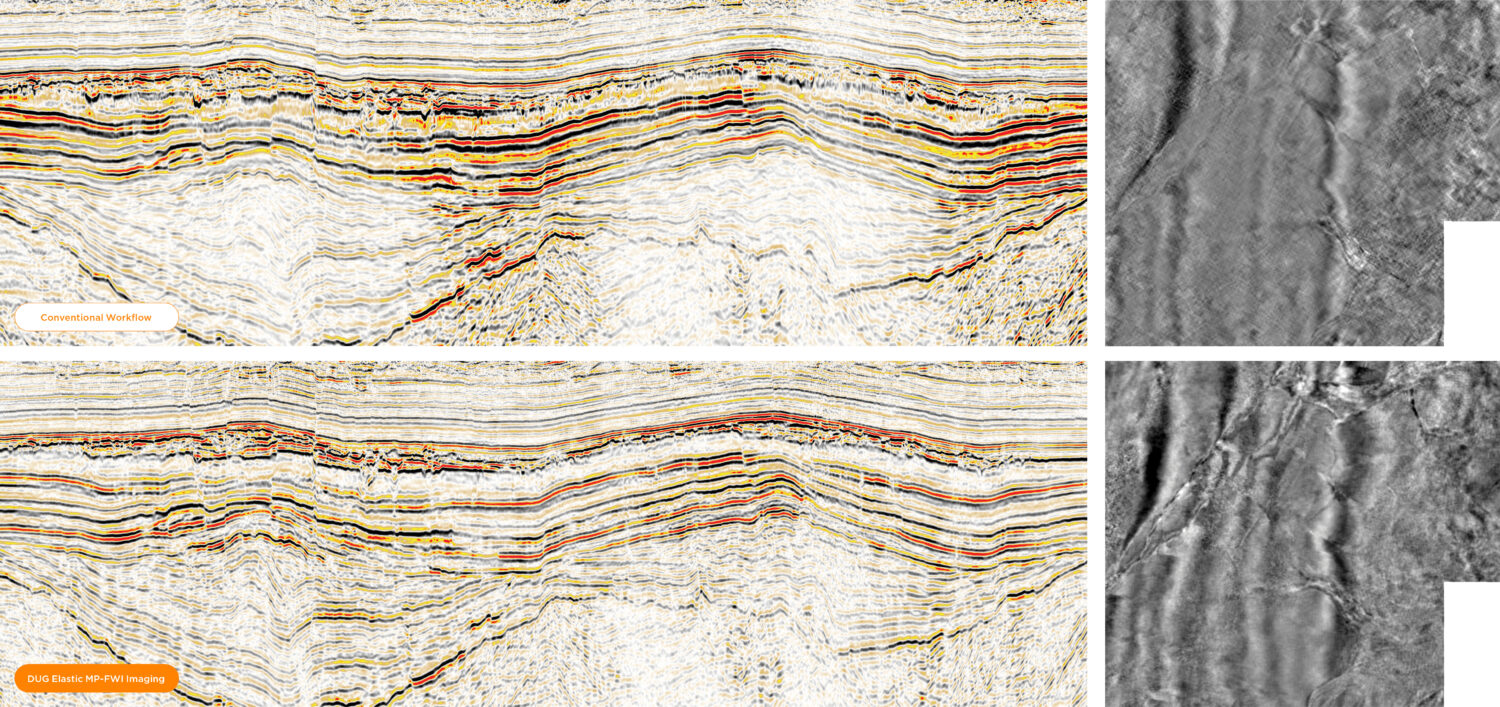High impedance contrasts a problem? Never fear. DUG Elastic MP-FWI Imaging is here!
DUG Elastic MP-FWI Imaging is a unique approach to seismic processing and imaging which turns the traditional paradigm on its head. It replaces not only traditional processing and imaging workflows, but also the subsequent inversion workflow for elastic rock properties.
The traditional processing workflow involves the testing and application of dozens of steps such as deghosting, designature, demultiple and regularisation, which are all designed to overcome the limitations of conventional imaging. These workflows are complex, subjective, and very time-consuming due to their serial nature and they rely on many assumptions and simplifications. All of these issues impact the output data quality. The resulting, primary-only data then undergoes a similarly complex model-building workflow to derive an estimate of the subsurface velocity, which is used for depth imaging. Post-migration processing is performed before the pre-stack reflectivity undergoes another workflow to derive rock properties that feed into quantitative interpretation, also relying on simplifications of the actual physics. As a result of these workflows, projects can take many months to years to complete.
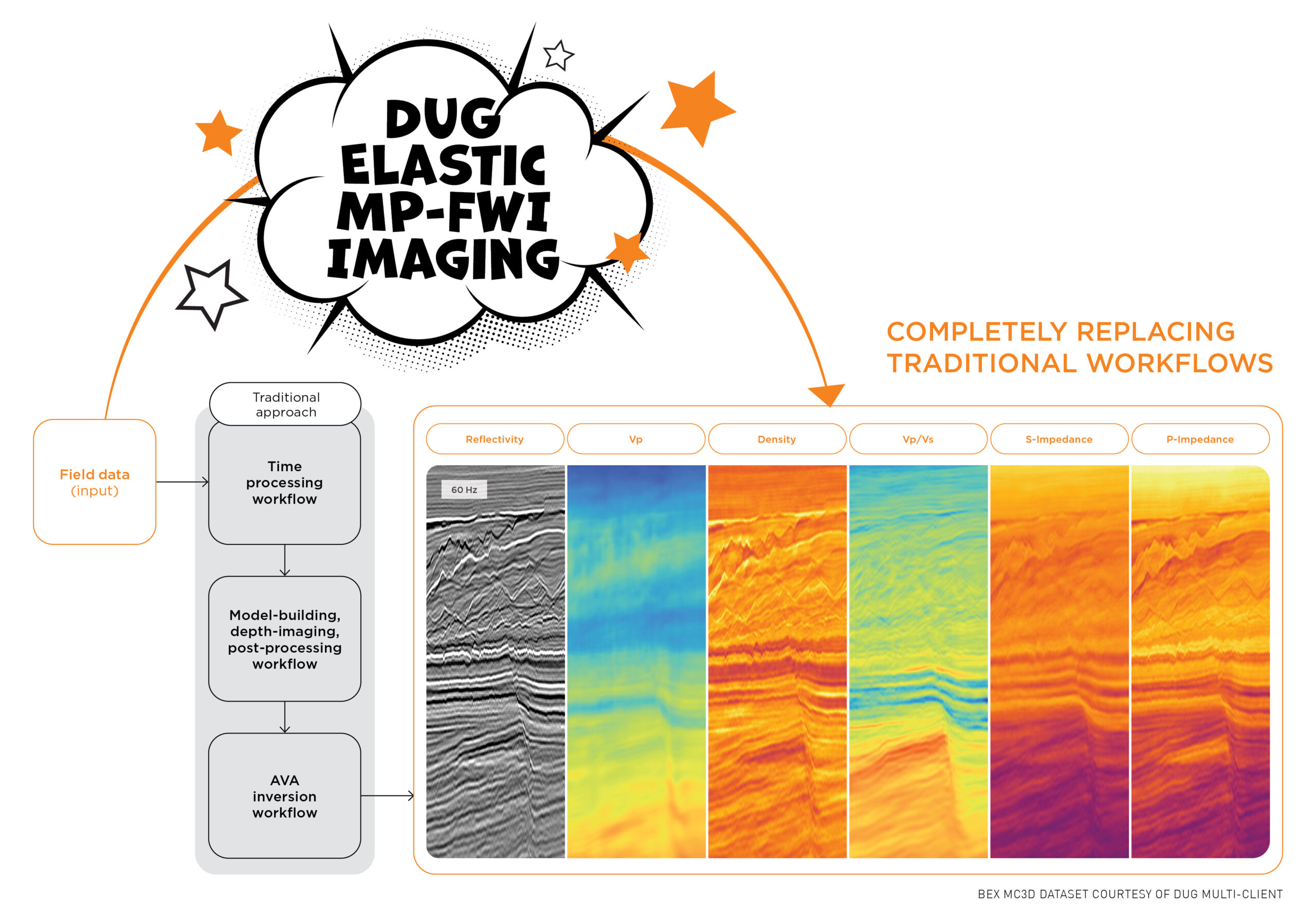
Elastic MP-FWI Imaging accounts for both compressional and shear waves, handling variations in seismic wave dynamics as a function of incidence angle, including in the presence of high impedance contrasts and onshore near-surface geological complexity. Multiples and converted waves are now treated as valuable additional signal, increasing sampling, resolution and constraining the inverted parameters.
As well as three-component reflectivity and velocity, DUG Elastic MP-FWI Imaging enables the estimation of fundamental rock properties like P-impedance, density and Vp/Vs from field data, without the need for a secondary amplitude variation with angle (AVA) inversion step. DUG Elastic MP-FWI Imaging simultaneously resolves not only subsurface structural features but also quantitative rock property information while avoiding the need for extensive data pre-processing and (post-imaging!) AVA-inversion workflows.
Here we consider an OBN dataset from the Gulf of America where water depths are approximately 2 km. In the figure above we see a comparison of the downgoing mirror RTM using pre-processed data (top), acoustic MP-FWI imaging reflectivity (middle), and elastic MP-FWI imaging reflectivity (bottom). We can immediately see the improvements that the MP-FWI imaging approaches bring over the conventional RTM with respect to resolution and illumination. The elastic MP-FWI imaging result has obviously produced the superior image around the high-impedance contrast caused by the salt, and the structures beneath it.
A complete replacement for traditional processing and imaging workflows is no longer a stretch of the imagination. Visit dug.com to see more outstanding DUG Elastic MP-FWI Imaging results.
Get in touch
DUG Elastic MP-FWI Imaging leaps entire workflows in a single bound, delivering unsurpassed imaging and high-resolution rock properties from field-data input. Superior outputs, in a flash!
Talk to us today. Contact info@dug.com

